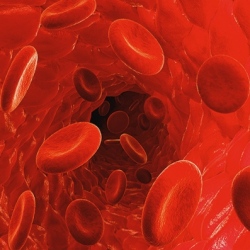
A new biologically inspired “injectable cryogel whole-cell cancer vaccine” combines patient-specific harvested cancer cells and immune-stimulating chemicals or biological molecules to help the body attack cancer. It has been developed by scientists at Harvard’s Wyss Institute.
This new approach is simpler and more economical than other cancer cell transplantation therapies, which harvest tumor cells and then genetically engineer them to trigger immune responses once they are transplanted back into the patient’s body, the researchers say. The research, headed by Wyss Core Faculty member David Mooney, Ph.D., was reported online in an open-access paper in Nature Communications on August 12.
The new anti-cancer vaccine uses the patient’s own cancer cells to trigger immune responses. The cryogels are a type of hydrogel made up of hydrophilic (water-compatible) polymer chains that are cross-linked and can hold up to 99 percent water.
They are created by freezing a solution of the polymer that is in the process of gelling. When thawed back again to room temperature, the substance turns into a highly interconnected pore-containing hydrogel, which is similar in composition to bodily soft tissues in terms of their water content, structure, and mechanics.
By adjusting their shape, physical properties, and chemical composition, Mooney’s team generated sponge-like, porous cryogels that can be infused with living cells, biological molecules, or drugs for a variety of potential therapeutic applications, including cancer immunotherapy.
The cryogels are minimally invasive because of their extreme flexibility and resilience, enabling them to be compressed to a fraction of their size and injected underneath the skin via a surgical needle. Once injected, they quickly bounce back to their original dimensions to do their job.
“After injection into the body, the cryogels can release their immune-enhancing factors in a highly controlled fashion to recruit specialized immune cells, which then make contact and read unique signatures off the patient’s tumor cells, also contained in the cryogels,” said Sidi Bencherif, the study’s co-first author and a Research Associate in Mooney’s research group.
This has two consequences, he said: “Immune cells become primed to mount a robust and destructive response against patient-specific tumor tissue and the immune tolerance developing within the tumor microenvironment is broken.”
